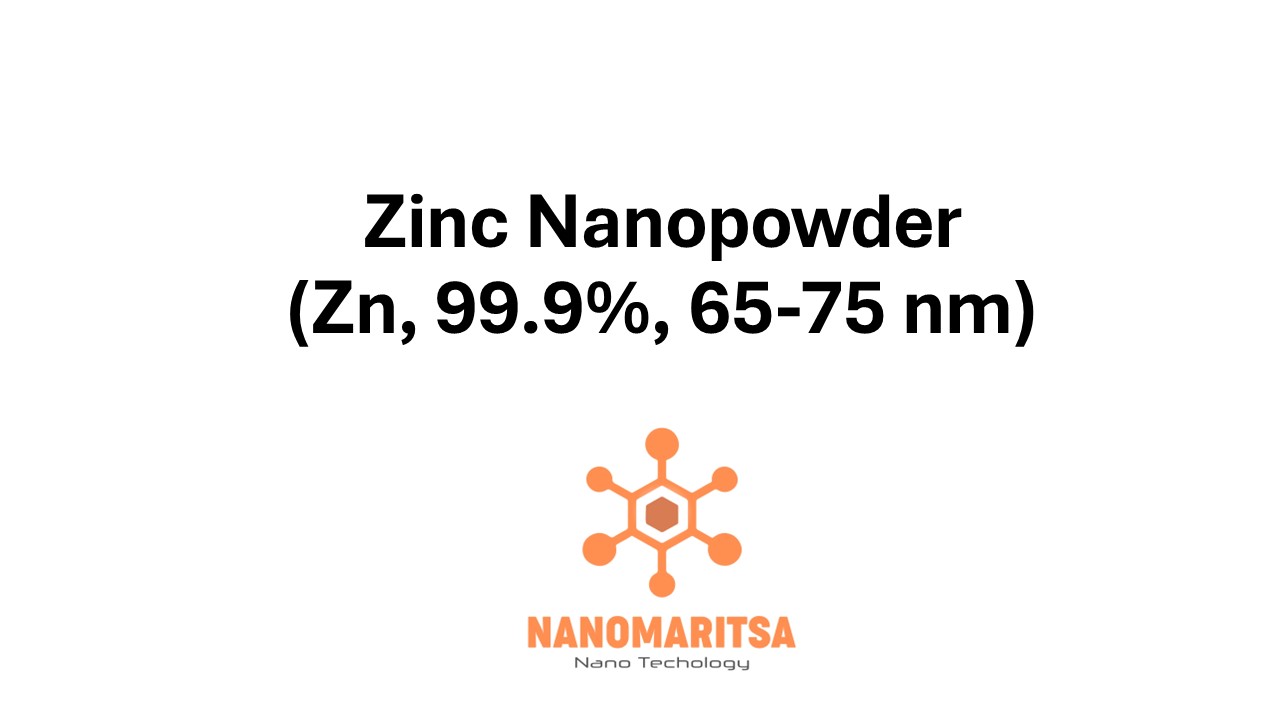Zinc Nanopowder (Zn, 99.9%, 65-75 nm) is a high-purity nanomaterial with particle sizes in the 65 to 75 nanometer (nm) range. Its nanoscale dimensions and exceptional purity provide a large surface area and enhanced reactivity, making it a versatile material for applications in electronics, catalysis, coatings, energy storage, and pharmaceuticals.
Key Features:
Zinc (Zn):
Zinc is a highly versatile metal with excellent electrical conductivity, anticorrosive properties, and catalytic capabilities, suitable for a wide range of advanced technologies.
Purity (99.9%):
The high purity ensures minimal impurities, which is critical for applications requiring consistent and reliable performance.
Particle Size (65-75 nm):
The nanoscale size provides an increased surface area-to-volume ratio, enhancing the material’s reactivity, conductivity, and integration with other substances.
Properties:
Enhanced Reactivity:
The small particle size increases the surface area, enabling higher chemical reactivity for catalytic and synthesis applications.
Thermal and Electrical Conductivity:
Zinc nanopowder is an efficient conductor of heat and electricity, supporting applications in electronics and thermal management.
Anticorrosive Properties:
Zinc is widely known for its anticorrosive abilities, making it valuable in protective coatings.
Lightweight:
Its low density allows for lightweight designs, particularly in aerospace and other advanced applications.
Chemical Stability:
While reactive, zinc nanopowder maintains stability under controlled conditions, ensuring durability in long-term applications.
Applications:
- Electronics:
Used in conductive inks, sensors, and semiconductor components, zinc nanopowder supports the production of high-performance electronic devices. - Catalysis:
Its enhanced surface area boosts efficiency in catalytic reactions, including hydrogenation and environmental remediation processes. - Energy Storage:
Zinc nanopowder is utilized in batteries, such as zinc-air and alkaline systems, to improve energy capacity and efficiency. - Coatings and Paints:
Its anticorrosive properties make it an essential material in protective coatings for steel and other metals. - Pharmaceuticals:
Zinc nanoparticles are employed in drug delivery systems, as well as in antimicrobial and antiviral formulations. - 3D Printing and Additive Manufacturing:
The nanoscale properties of zinc enable its use in advanced manufacturing processes for precise, high-quality parts.
Handling and Safety:
Health and Safety Considerations:
Avoid inhalation, ingestion, or direct skin contact. Use protective equipment such as gloves, goggles, and a face mask when handling the material. Work in a well-ventilated area to prevent the accumulation of airborne particles.
Storage:
Store in a dry, cool, and well-ventilated area. Protect the material from moisture and air exposure to prevent oxidation. Keep containers sealed tightly when not in use.
Precautions:
Minimize dust generation during handling, and follow proper disposal guidelines as per local environmental regulations.
Summary:
Zinc Nanopowder (Zn, 99.9%, 65-75 nm) combines nanoscale properties, high reactivity, and excellent purity to support applications across various industries, including electronics, catalysis, coatings, and energy storage. Its balance of performance and versatility makes it a valuable material for advanced technologies. Proper handling and storage are essential to maintain its quality and maximize its potential in cutting-edge applications.
| Measurement (gr) | 25 grams, 100 grams |
|---|






